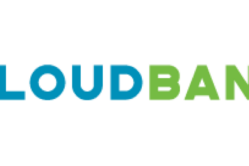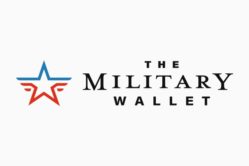The name Sallie Mae probably makes you think of student loans, and for good reason.
Sallie Mae leads the nation in higher education financing, issuing millions of student loans, both public and private, since its founding in 1972.
But Sallie Mae also helps families avoid borrowing by encouraging them to save money for college with its banking products and incentive programs.
Sallie Mae Bank’s online savings accounts, along with its Upromise program, offer incentives, high-yield interest savings accounts, competitive CD rates, and 529 options which can boost your savings by 10 percent.
These accounts can shift your college savings plans in overdrive.
If you’re looking to the future and would like a safe way to grow your savings, check out what Sallie Mae Bank has to offer.
Sallie Mae Online Savings Account
On the surface, Sallie Mae Bank’s features are similar to most online banks, such as Discover Online Banking and Chase Access Checking.
You can expect features like no minimum deposits, no monthly fees, and full FDIC insurance coverage up to $250,000, all of which are attractive to anyone trying to save money.
Sallie Mae does not issue ATM cards for its savings accounts, which means accessing your money will take a little more effort, but this can be a plus when you’re trying to save.
You can easily set up one-time and automatic withdrawals and deposits for your Sallie Mae savings account, so it’s not like you can’t access your money.
Saving money can be difficult, especially when you have a tight budget and a growing family. Accounts like Sallie Mae Bank’s can help integrate saving money into your monthly routine.
What Makes Sallie Mae Online Savings Account Attractive?
Conveniences and low fees can remove some obstacles to saving money, but they won’t make your money grow much faster.
For that to happen you’ll need a favorable interest rate and a way to optimize your deposits.
Sallie Mae offers both.
High-Yield Interest Rates
Like a lot of online only banks, Sallie Mae can give you a higher interest rate than a traditional neighborhood bank or credit union.
With fewer employees, fewer financial products, and fewer brick-and-mortar buildings to care for, online only banks like Sallie Mae can afford to pay higher rates of yield on online savings accounts and certificates of deposit.
You give up the conveniences of a neighborhood bank in exchange for the higher savings rates.
But a higher interest rate — sometimes six to ten times higher than a traditional savings rate — means your savings will grow a lot faster and you’ll be moving more quickly toward the goal of financing your own (or your children’s) higher education.
Leveraging Savings With Upromise
To help optimize what you can afford to deposit into a savings account, Sallie Mae encourages account holders to use its Upromise incentive programs.
Sallie Mae bought Upromise in 2006 and now operates the program as a subsidiary.
Upromise includes several aspects, so let’s take a closer look.
Compare Current Savings Account Rates
How Upromise Helps You Save for College
Online banking has led to some nice innovations like checking accounts that round up your transactions to the next dollar, putting the change into savings, and cash back when you use your debit card at specific stores.
Upromise harnesses these innovations with an eye toward college savings.
Upromise Mastercard Rewards Program
With Upromise’s Mastercard, you can earn 1.25 percent cash back toward college with every transaction. You can earn higher percentages on a wide variety of special promotions.
The card also allows you to round up your purchases and automatically deposit the change toward future educational expenses.
When you direct all of these incentives into a 529 college savings account at Sallie Mae, Upromise will add another 15 percent to your deposits from the Mastercard each billing cycle.
For example, if you spent $2,000 a month on retail transactions such as groceries, gas, clothes, books, the power bill, and such, you might generate about $50 by rounding up your purchases.
Add $25, which is the 1.25 percent cash back on all purchases, and you’re saving $75 a month without even trying.
Then, by directing the funds into a 529 account, you’re getting another 15 percent boost, making the monthly total about $86, which adds up to about $1,000 a year.
The beauty of this program lies in the fact that you’re saving money without making a point of saving money.
Like with any credit card, though, make sure you pay off the balance each month or else the finance charges will defeat the purpose.
Using Upromise Without the Credit Card
Unless you’re sure you can keep the Upromise Mastercard up to date and avoid finance charges and late fees, it’s best to stay away from it.
Which is fine because Upromise offers several other attractive savings programs that direct money toward college savings without using the Mastercard:
- You can connect your debit card to your Upromise account and earn cash toward college at a wide variety of restaurants and retail stores.
- You can shop directly from the Upromise.com portal which includes hundreds of online retailers, all of which give at least 5 percent cash back.
- You can have your family and friends connect their cards and online shopping purchases to your savings account.
- You can get a penny back on every gallon of gas you buy at Exxon or Mobil stations.
These features may take a little more thought than simply swiping your Mastercard, but they can generate substantially more savings without the risk of paying for an out-of-control credit card.
Of course, you can also do both: Get the Mastercard and take advantage of the other features.
What Happens to Money in Upromise Account?
All these cash back, round-up and incentive programs can seem abstract until you see the result: a gradually growing balance in your Upromise account.
To fully optimize and take advantage of the balance, you’ll connect your Upromise account to a Sallie Mae savings account, specifically a 529 account.
A 529 account, authorized by the IRS in 1996, offers a variety of tax incentives and conveniences to help you save for higher education or even K-12 education in many states.
Different states have different rules for 529 accounts, so check with a tax advisor or financial planner if you have specific questions. Your human resources staff at work can also help.
Sallie Mae offers a 10 percent bonus on your Upromise earnings when you link your Sallie Mae savings account. Qualify for this bonus by either setting up an automatic deposit into your Sallie Mae account ($25 or more per month) or depositing at least $5,000.
Be sure to claim this incentive within 90 days of opening the account.
Ultimately, you do not have to use your Upromise savings on higher education or even save it at all. You can also request a check and use the money as you see fit. After all, it’s your money.
Check out the details about Upromise at its site.
Should You Open a Sallie Mae Online Savings Account?
If you have a Upromise account or plan to start using this service, then opening a Sallie Mae online savings account makes a lot of sense.
Since Upromise is a subsidiary of Sallie Mae, the two accounts interface seamlessly, and the 10 percent bonus on Upromise earnings when you connect to a Sallie Mae account makes the decision a no-brainer.
But what if you’re simply looking to save and not get involved in Upromise incentive programs?
Sallie Mae still offers a lot.
You’ll get great savings rates in the bank’s high yield accounts and competitive rates on CDs, too. When you’re saving money, good rates make all the difference.
While you won’t be able to access your savings via ATM, you can easily set up other ways to deposit and withdraw money online by connecting your Sallie Mae account to your primary bank.



About the comments on this site:
These responses are not provided or commissioned by the bank advertiser. Responses have not been reviewed, approved or otherwise endorsed by the bank advertiser. It is not the bank advertiser’s responsibility to ensure all posts and/or questions are answered.